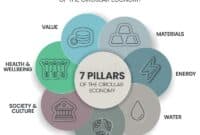5 Powerful Budgeting Methods to Crush Your Financial Goals
Introduction
With great pleasure, we will explore the intriguing topic related to 5 Powerful Budgeting Methods to Crush Your Financial Goals. Let’s weave interesting information and offer fresh perspectives to the readers.
5 Powerful Budgeting Methods to Crush Your Financial Goals

The word "budget" can often feel like a four-letter word, conjuring up images of restrictive limitations and endless spreadsheets. But the truth is, budgeting isn’t about deprivation; it’s about empowerment. It’s about taking control of your finances, making informed decisions, and achieving your financial goals, whether it’s buying a home, traveling the world, or simply having the peace of mind that comes from financial security.
The key to successful budgeting lies in finding a method that works for you. There’s no one-size-fits-all approach, and what works for one person may not work for another. That’s why we’ve compiled this guide to 5 powerful budgeting methods, each with its own unique strengths and weaknesses.
1. The 50/30/20 Budget:
This simple and intuitive method divides your after-tax income into three categories:
- 50% for Needs: This includes essential expenses like housing, utilities, groceries, transportation, and healthcare.
- 30% for Wants: This category covers discretionary spending like entertainment, dining out, and hobbies.
- 20% for Savings and Debt Repayment: This portion is dedicated to building your emergency fund, paying down debt, and investing for the future.
Pros:

- Easy to understand and implement: The 50/30/20 method is straightforward and doesn’t require complex calculations.
- Provides a clear framework: It helps you visualize how your income is allocated and encourages mindful spending.
- Promotes balance: It ensures that you allocate enough for both essential needs and discretionary spending.
/what-makes-for-a-successful-budget-1289233_final-225d5c28eefd4a0a8ecbebce0f599b1d.jpg)
Cons:
- May not be suitable for everyone: It might be challenging for individuals with low incomes or high debt burdens to adhere to the 20% savings and debt repayment allocation.
- Lack of flexibility: It doesn’t account for individual circumstances and may not be adaptable to unexpected expenses.

2. The Zero-Based Budget:
This method requires you to allocate every dollar of your income to a specific category, ensuring that you spend all of your money and don’t overspend.
How it works:
- Track your income: List all your sources of income, including your salary, side hustles, and any other regular income.
- Track your expenses: Categorize your expenses, including fixed expenses (rent, mortgage, bills), variable expenses (groceries, entertainment), and debt payments.
- Allocate every dollar: Assign each dollar of your income to a specific expense category, leaving no room for overspending.
Pros:
- Encourages financial discipline: It forces you to be mindful of your spending and prioritize your financial goals.
- Reduces impulsive spending: By allocating every dollar, you’re less likely to make unplanned purchases.
- Promotes financial transparency: It provides a clear picture of your financial situation and helps you identify areas where you can save money.
Cons:
- Time-consuming: It requires meticulous tracking and planning, which can be overwhelming for some.
- Rigid: It can be difficult to adjust to unexpected expenses or changes in income.
- May not be suitable for everyone: It might not be ideal for individuals who prefer more flexibility in their spending.
3. The Envelope System:
This method involves dividing your cash into physical envelopes, each representing a different expense category.
How it works:
- Allocate cash to envelopes: At the beginning of each month, withdraw cash from your bank account and divide it into envelopes labeled with specific expense categories, such as groceries, entertainment, and gas.
- Spend within your allocated amounts: Once the money in an envelope is gone, you can’t spend more in that category until the next month.
Pros:
- Visual and tangible: The physical envelopes make it easier to track your spending and stay within your budget.
- Promotes mindful spending: The limited cash in each envelope encourages you to make conscious spending decisions.
- Simple and easy to implement: It doesn’t require complex software or apps.
Cons:
- Not ideal for everyone: It might not be suitable for individuals who prefer using debit cards or credit cards.
- Can be inconvenient: Carrying around multiple envelopes can be cumbersome.
- Limited to cash transactions: It doesn’t account for online purchases or recurring bills.
4. The 50/30/20 Budget with a Twist:
This method takes the 50/30/20 budget and adds a layer of customization to accommodate individual needs and goals.
How it works:
- Start with the 50/30/20 framework: Allocate 50% of your income to needs, 30% to wants, and 20% to savings and debt repayment.
- Adjust based on your priorities: If you have a significant debt burden, you might allocate a higher percentage to debt repayment. If you’re saving for a specific goal, you might increase the savings allocation.
Pros:
- Flexible and adaptable: It allows you to tailor the budget to your individual circumstances and goals.
- Provides a solid foundation: It offers a clear starting point for managing your finances.
- Promotes financial awareness: It encourages you to consider your spending habits and prioritize your financial goals.
Cons:
- Requires some planning and adjustment: It might require you to adjust the percentages based on your individual needs.
- May not be as straightforward as the original 50/30/20 method: It requires a bit more thought and effort to implement.
5. The "Pay Yourself First" Method:
This method prioritizes saving by setting aside a portion of your income for savings before paying any other expenses.
How it works:
- Automate savings: Set up automatic transfers from your checking account to your savings account on a regular basis.
- Treat savings as a non-negotiable expense: Consider savings as a fixed expense like rent or mortgage, and don’t touch it unless absolutely necessary.
Pros:
- Promotes consistent savings: Automating savings ensures that you’re saving regularly, even when you’re busy or forgetful.
- Builds financial security: It helps you build a healthy emergency fund and reach your long-term financial goals.
- Encourages discipline: It instills a sense of financial discipline and prioritizes saving over spending.
Cons:
- May require adjusting your spending habits: You might need to reduce spending in other areas to accommodate your savings goal.
- Can be challenging initially: It might be difficult to adjust to saving a significant portion of your income, especially if you’re used to spending it all.
Choosing the Right Method:
The best budgeting method for you depends on your individual circumstances, personality, and financial goals.
- For beginners: The 50/30/20 method or the Envelope System are good starting points due to their simplicity.
- For those seeking more control: The Zero-Based Budget or the 50/30/20 Budget with a Twist offer more customization and flexibility.
- For those prioritizing savings: The "Pay Yourself First" method is a powerful tool for building financial security.
Remember:
- Be honest with yourself about your spending: Track your expenses for a month or two to get a clear picture of your spending habits.
- Set realistic goals: Don’t try to change your spending habits overnight. Start with small changes and gradually adjust your budget.
- Be patient and persistent: Budgeting takes time and effort. Don’t get discouraged if you don’t see results immediately.
- Celebrate your successes: Acknowledge your progress and reward yourself for sticking to your budget.
By implementing a budgeting method that works for you, you can take control of your finances, achieve your financial goals, and build a brighter future. Remember, budgeting isn’t about deprivation; it’s about freedom. It’s about making informed decisions, prioritizing your values, and living a life that aligns with your financial goals.

Closure
Thus, we hope this article has provided valuable insights into 5 Powerful Budgeting Methods to Crush Your Financial Goals. We appreciate your attention to our article. See you in our next article!
google.com





